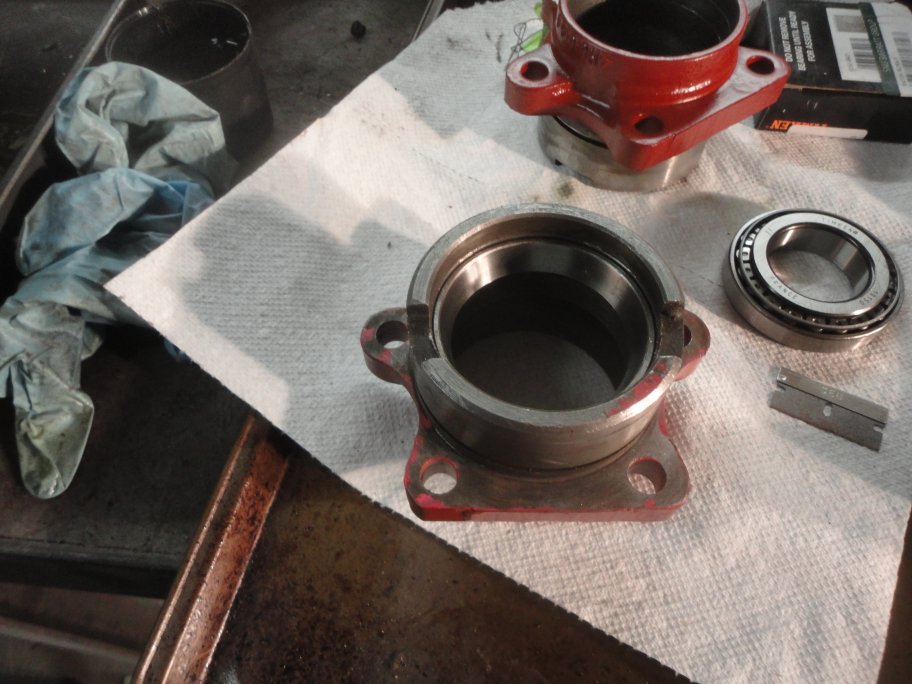 1) The outer bearing races for that go into the output shaft housing are easily removed with a hammer and a drift (brass rod) or chissel. The new
outer races are also easy to install with a hammer and a brass drift. Brass is recommended since it will not damage the race.
1) The outer bearing races for that go into the output shaft housing are easily removed with a hammer and a drift (brass rod) or chissel. The new
outer races are also easy to install with a hammer and a brass drift. Brass is recommended since it will not damage the race.
|
 2) The inner bearing on the output shafts must be pressed in. An old bearing and a large socket can be used as a spacer to press against
the bearing. In this picture from the bottom up is the bearing to be installed, 2 output shaft spacers, 2 junk bearings and a socket.
2) The inner bearing on the output shafts must be pressed in. An old bearing and a large socket can be used as a spacer to press against
the bearing. In this picture from the bottom up is the bearing to be installed, 2 output shaft spacers, 2 junk bearings and a socket.
|
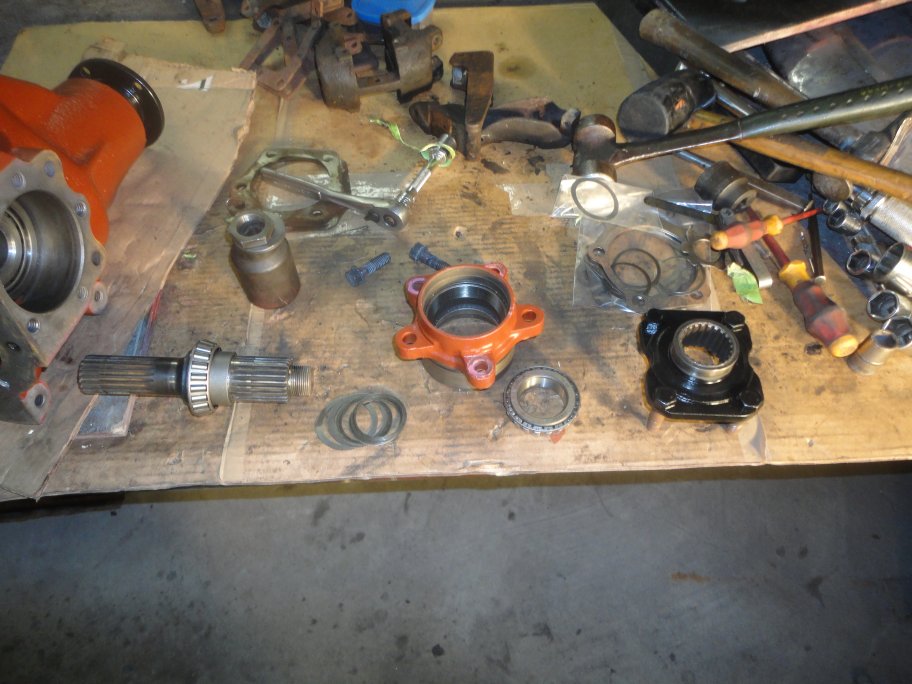 3) Here are the components of the output shaft ready to go together.
3) Here are the components of the output shaft ready to go together.
|
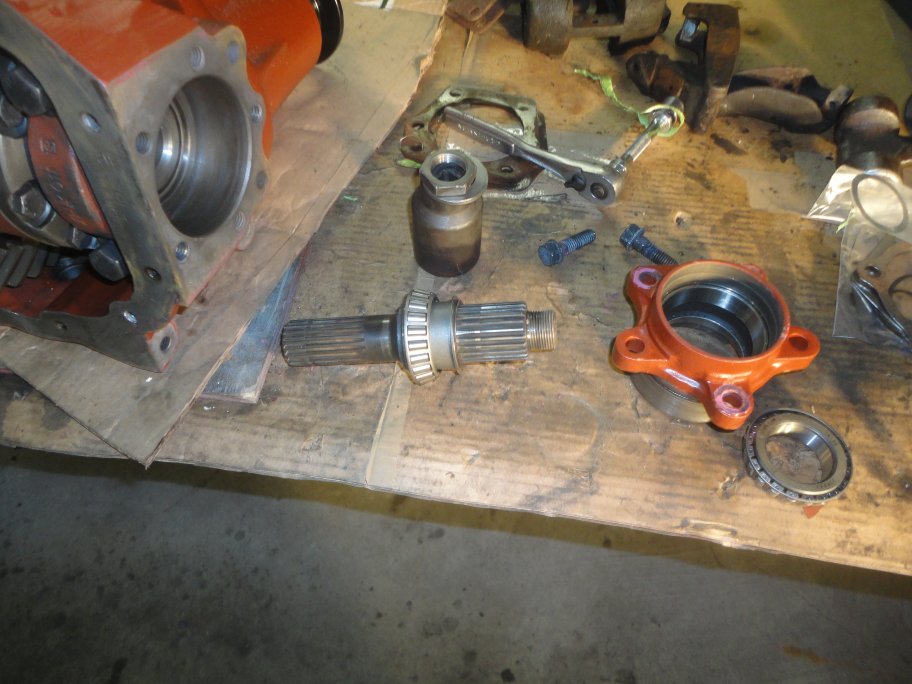 4) First the spacer and a stack of shims (previously removed) are installed on the output shaft.
4) First the spacer and a stack of shims (previously removed) are installed on the output shaft.
|
 5) The housing is placed over the output shaft, followed by the outer bearing. None of the bearings should be greased at this time since it
will through off the backlash adjustment.
5) The housing is placed over the output shaft, followed by the outer bearing. None of the bearings should be greased at this time since it
will through off the backlash adjustment.
|
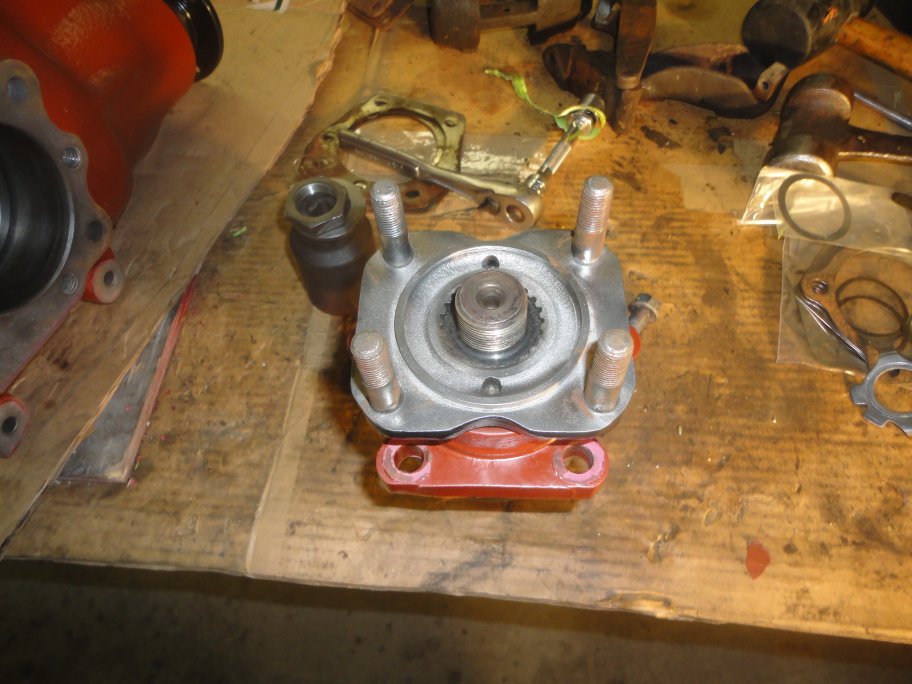 6) Next to go on is the output shaft flange. The output shaft seal is not installed at this time. The manual recommends doing it this way.
I guess is to prevent any drag from the seal messing up the dial indicator reads.
6) Next to go on is the output shaft flange. The output shaft seal is not installed at this time. The manual recommends doing it this way.
I guess is to prevent any drag from the seal messing up the dial indicator reads.
|
|
|
|
 7) To be correct the thick washer must go on next so that the nut has a flat surface to tighten to.
7) To be correct the thick washer must go on next so that the nut has a flat surface to tighten to.
|
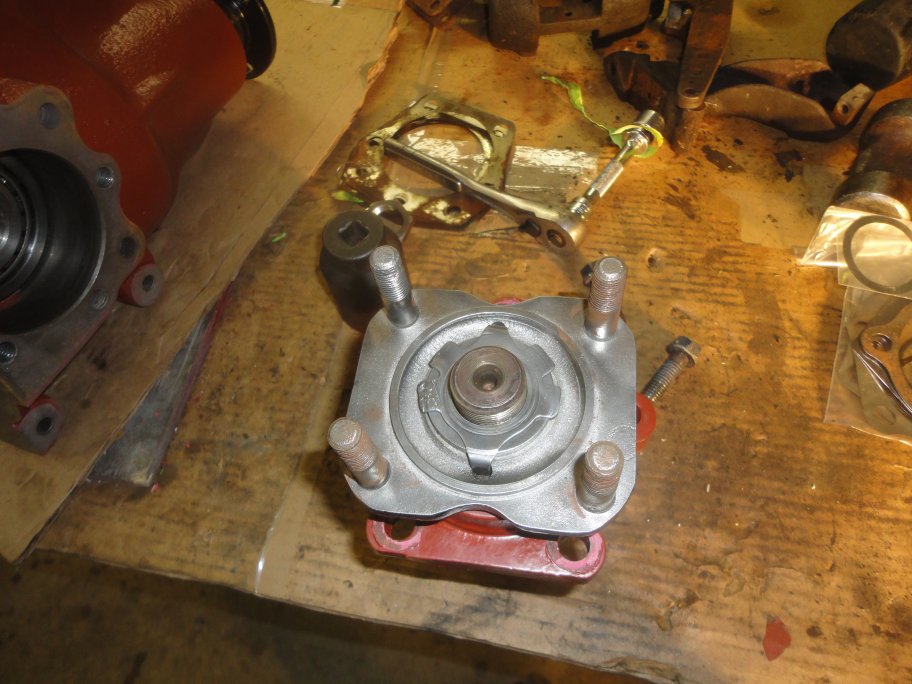 8) Though not really neccessary at this time, the locking plate goes on next.
8) Though not really neccessary at this time, the locking plate goes on next.
|
 9) The nut should be put on and tightened. However, the locking tabs should not be bent over, since the hole thing has to come appart, not only
to add/removed shims, but to put the seal in.
9) The nut should be put on and tightened. However, the locking tabs should not be bent over, since the hole thing has to come appart, not only
to add/removed shims, but to put the seal in.
|
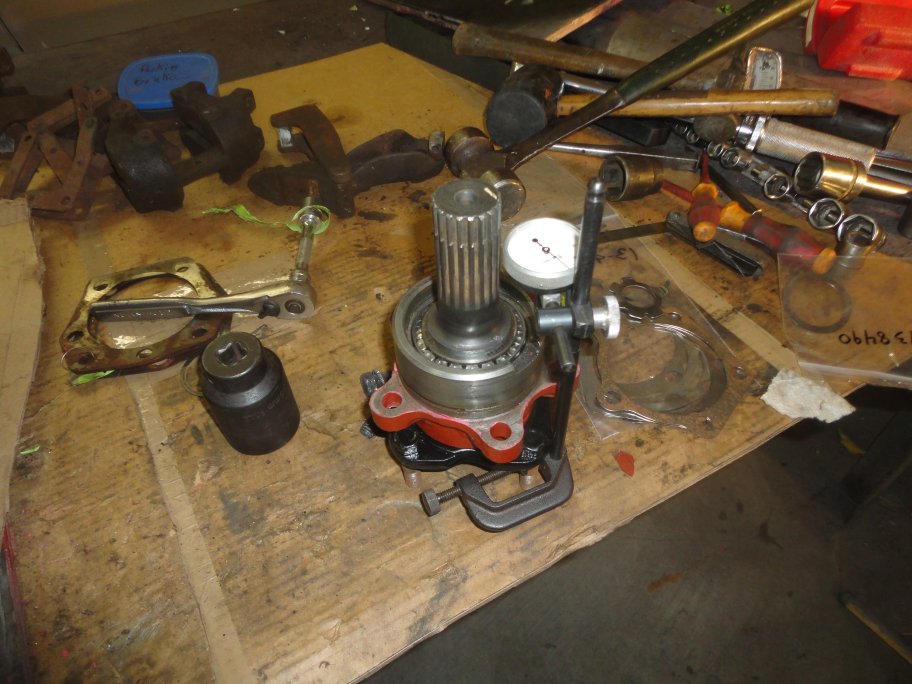 10) Here a dial indicator is mounted to the output shaft flange. The output shaft housing must move no more than about 0.004" (check your service manual for
the correct specs) to get the back lash set correctly. If the dial indicator reading is too high or too low the whole thing must come appart
and shims must be added or removed. Then it has to go back together to be measured again. Not all of the shim sizes listed in the service manual
are available so you will have to comprise.
10) Here a dial indicator is mounted to the output shaft flange. The output shaft housing must move no more than about 0.004" (check your service manual for
the correct specs) to get the back lash set correctly. If the dial indicator reading is too high or too low the whole thing must come appart
and shims must be added or removed. Then it has to go back together to be measured again. Not all of the shim sizes listed in the service manual
are available so you will have to comprise.
e.g. If the dial indicator reads 0.010" when the output shaft housing is pried up you will need a shim of 0.006" (0.010"-0.004") to get the backlash
set correctly.
|
 11) Once the backlash is set, the whole thing has to be taken appart again to great the bearings and install the seals. Note the outer bearing is captured
by the seal, so you must put the bearing in the housing before putting the seal in.
11) Once the backlash is set, the whole thing has to be taken appart again to great the bearings and install the seals. Note the outer bearing is captured
by the seal, so you must put the bearing in the housing before putting the seal in.
|
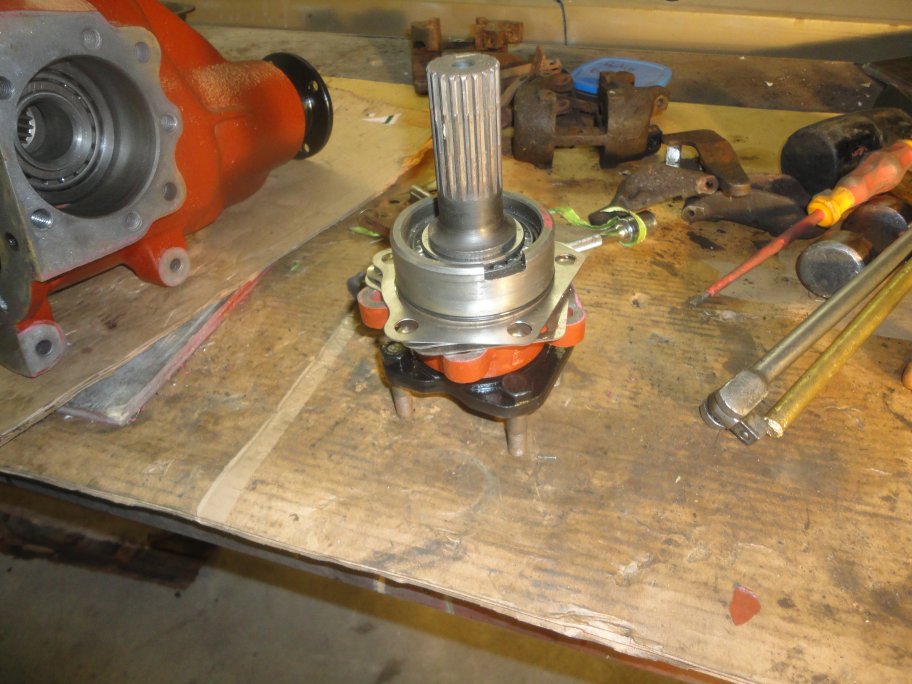 12) Here is a fully assembled output shaft assembly. Unlike what is shown in the picture, the shims and o-ring should not be installed at this point if you have not installed the differential
carrier in the differential housing and set the backlash.
12) Here is a fully assembled output shaft assembly. Unlike what is shown in the picture, the shims and o-ring should not be installed at this point if you have not installed the differential
carrier in the differential housing and set the backlash.
|
|